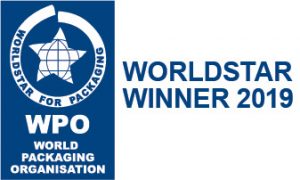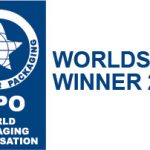Epple Druckfarben has introduced BoFood®Organic an ink system for inner side packaging printing. Helmut Fröhlich of Epple tells Packaging MEA the practicality of its ‘Food-Safe’ and environmentally friendly inks and varnishes
 German-based ink specialist Epple Druckfarben has introduced BoFood® next generation offset series especially conceived for the safe printing of primary food packaging. The new series meets three technical requirements for food packaging when it comes to ink: Low odour, swelling reduced, migration reduced/harmless.
German-based ink specialist Epple Druckfarben has introduced BoFood® next generation offset series especially conceived for the safe printing of primary food packaging. The new series meets three technical requirements for food packaging when it comes to ink: Low odour, swelling reduced, migration reduced/harmless.
Epple offers standard process inks, special inks, varnishes, fountain solutions, additives, and special process inks, as well as mixing stations, an ink dispensing system. It also provides inks for food and cigarette packaging; UV and conventional foil inks; inks for labels; effect and UV-inks, and varnishes; and spot and CI colors for packaging/labels. In addition, the company offers customised solutions, including CI-inks, special and security inks and varnishes, spot colours, and special varnishes.
The BoFood® series comes in two types –BoFood®MH (Migration Harmless) and BoFood® Organic. “When we speak of food packaging, it’s all about primary food packaging, the outside of the boxes. While BoFood® MH is a low migration ink, we are calling it Migration Harmless. So when the liquid components from the ink enter the carton and leak out on the reverse side it is a food additive.Our inks are migration harmless.”
The BoFood® ink series can be used on the outer side substrates like cartons and paper, primarily for offset-based printing.
The German way
Epple’s BoFood® inks cater mainly to chocolate and tea packaging, where the codes are on the inside and can easily penetrate into the food. Most of the chocolate comes with a primary which is not carton. It is wrapped with a flexible substrate and on top of that comes the carton.
However, in Germany it is a bit different, says Fröhlich. “It can be in plastic packaging or directly packaged in cartons. The foil inside is not our buyer. When we talk about direct food contact or indirect food contact it is the BoFood® harmless inks for ultra-packaging here.” The MH series is for the ingredients and liquids that can penetrate into the cardboard.
However, for printing on the inside of the package which is facing the food, the BoFood®MH is not recommended, because the solids like resins, pigments or additives are not evaluated for direct food contact. “We have an innovative ink solution for direct food contact and printing on the reverse side of the primary packaging. It’s called the BoFood® Organic,” says Fröhlich.
The font of this ink is not a standard CMYK scaling. The black is a grey, the magenta is a red, the cyan is more of blue. Fröhlich explains, “It is not the same colourants like the outer side printing inks. So you cannot have ISO for this type of inks.
Brand use
While the BoFood® Organic ink can achieve only a part of the Pantone shade, you can find only part of the ink in the formula guide and it means the maximum is the middle shades of a Pantone guide. “This ink has been used by Nestlé extensively for their cardboard primary packaging. On the outer side it is the BoFood® migration harmless ink with a high-class varnish and on the inner side is BoFood® organic direct food contact ink,” informs Fröhlich.
Sharjah based Bab Al Rayan is Epple’s local dealer.




